A classic Japanese udon noodle soup packed with umami flavors, this Kitsune Udon is a cozy and comforting recipe made in under 20 minutes. All you need are a handful of ingredients and you’ll have this udon soup ready in a flash.
Chewy and bouncy udon noodles in a bowl of rich, flavourful soup topped with inari age pouches and kamaboko, a bowl of kitsune udon is like a hug for your soul. Perfect for a cold day or when you need a quick meal.
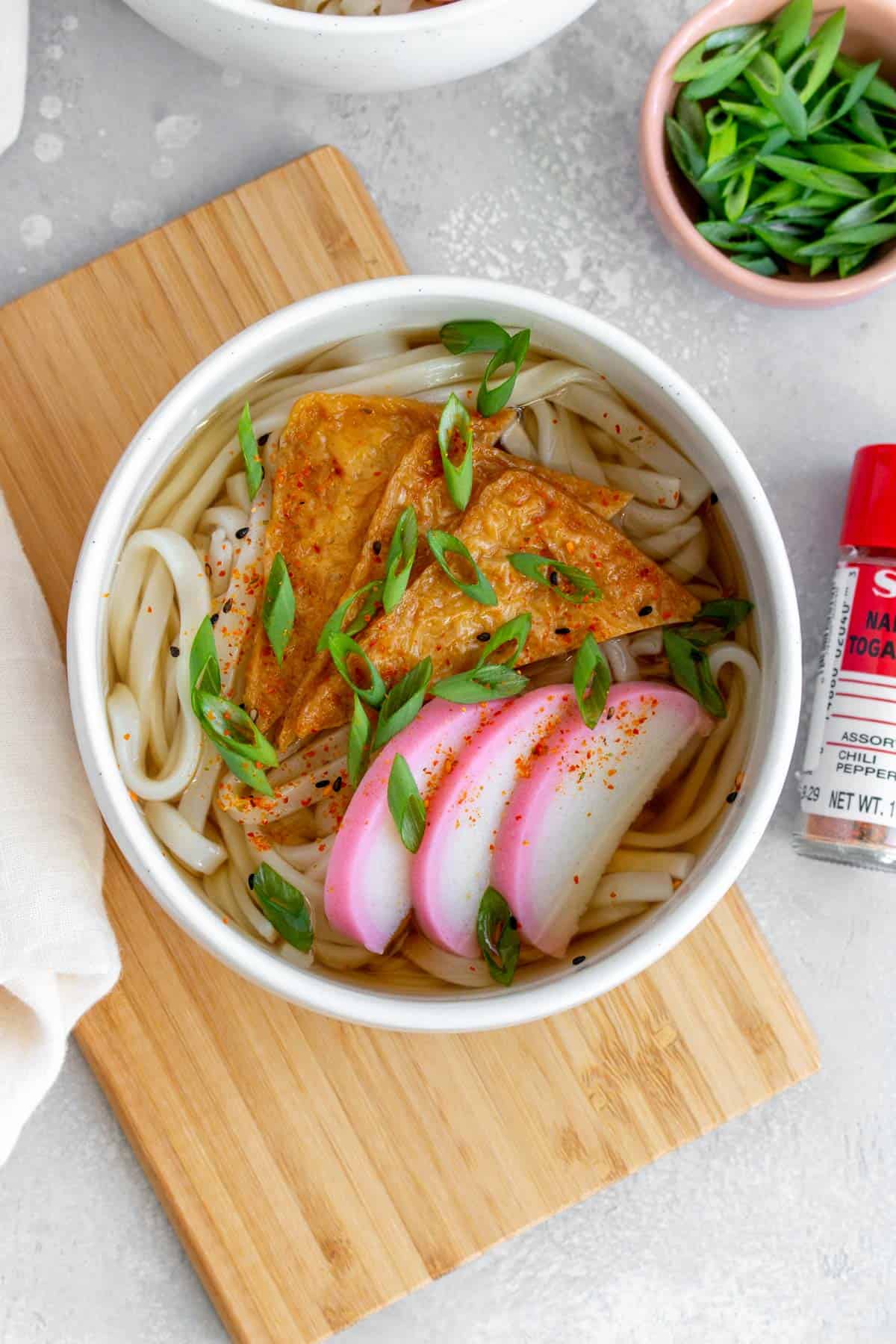
Why You’ll Love This Udon Recipe
- You only need a handful of ingredients and less than 20 minutes to make this kitsune udon recipe so that you can whip it up real quick on a busy night.
- This udon recipe leans on freezer and pantry staples, so you can easily make it without having to run out to the store.
- The best part is honestly how simple it all is!
Ingredients You’ll Need

- dried bonito — I use hondashi to make my broth soup base.
- light soy sauce — I prefer light soy sauce for the soup.
- mirin — mirin is a Japanese sweet rice wine, if you are unable to find it, you can try rice vinegar with extra honey.
- sugar and salt
- udon noodles — I use frozen udon noodles that are sold in the freezer section that takes less than 2 minutes to cook. Other options are fresh udon noodles and dried udon noodles.
- inari age — for ease and convenience, I buy inari age. I can usually find these tofu pouches in the tofu section at Asian grocers. Check out the FAQ if you want to make your own inari age using aburaage. This ingredient is a must as this kitsune udon recipe is also called inari udon! Try my tempura udon or curry udon if you do not have inari age. See the image below to see what packaged inari age looks like.
- kamaboko — also known as Japanese fish cake, it is usually made with surimi, a white fish paste. You can usually find this in the frozen section of most Asian grocery stores.
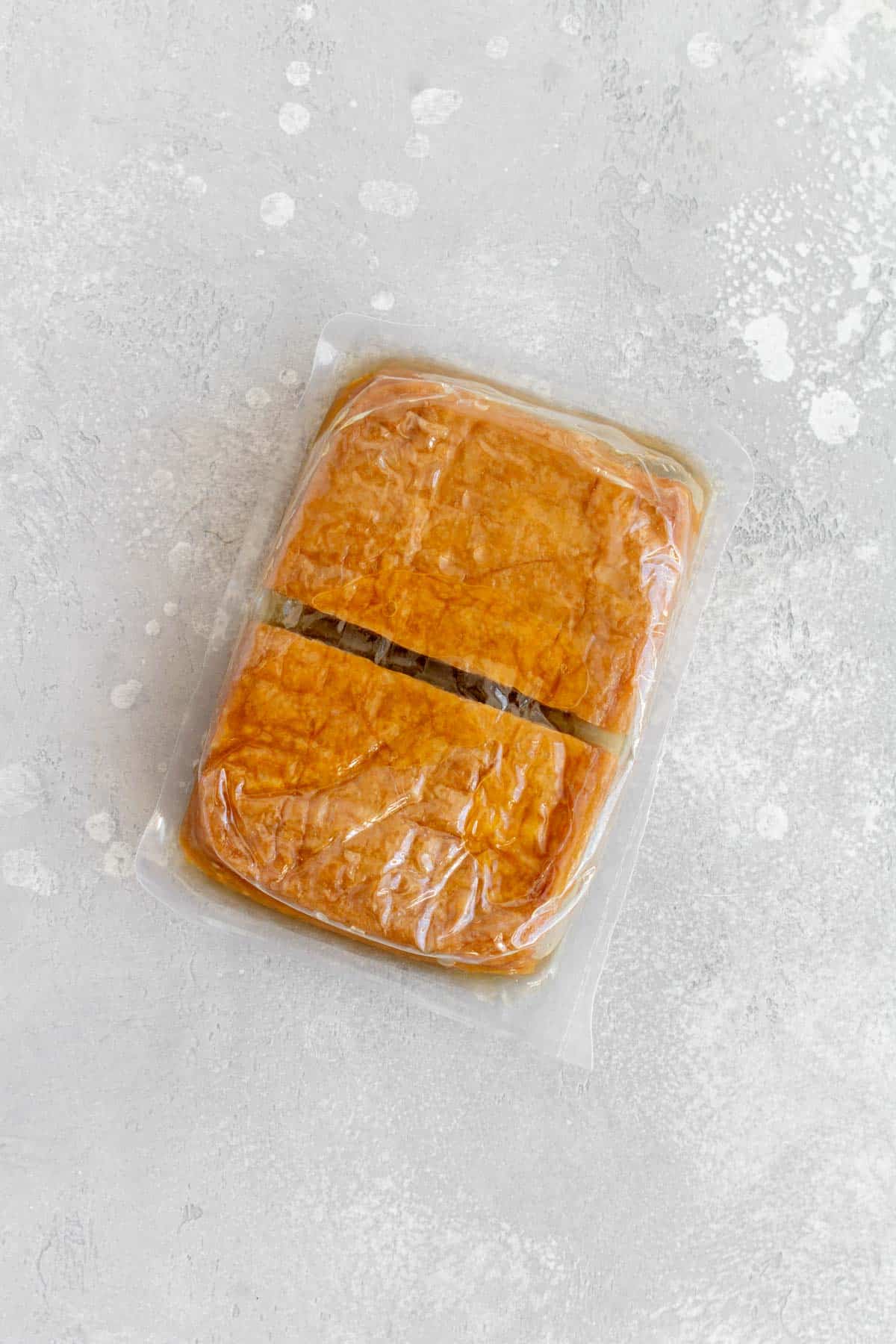
How to Make Kitsune Udon

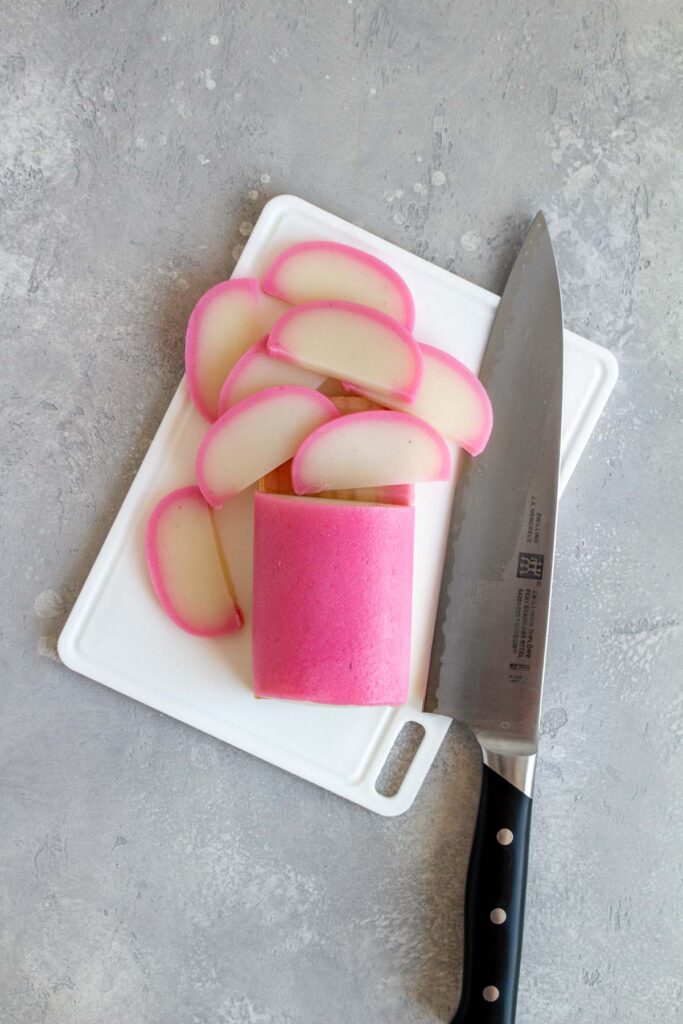
- Cut the inari age in half, into triangles. Set aside in the fridge.
- Slice the kamaboko into thin slices. Set aside with the inari age.
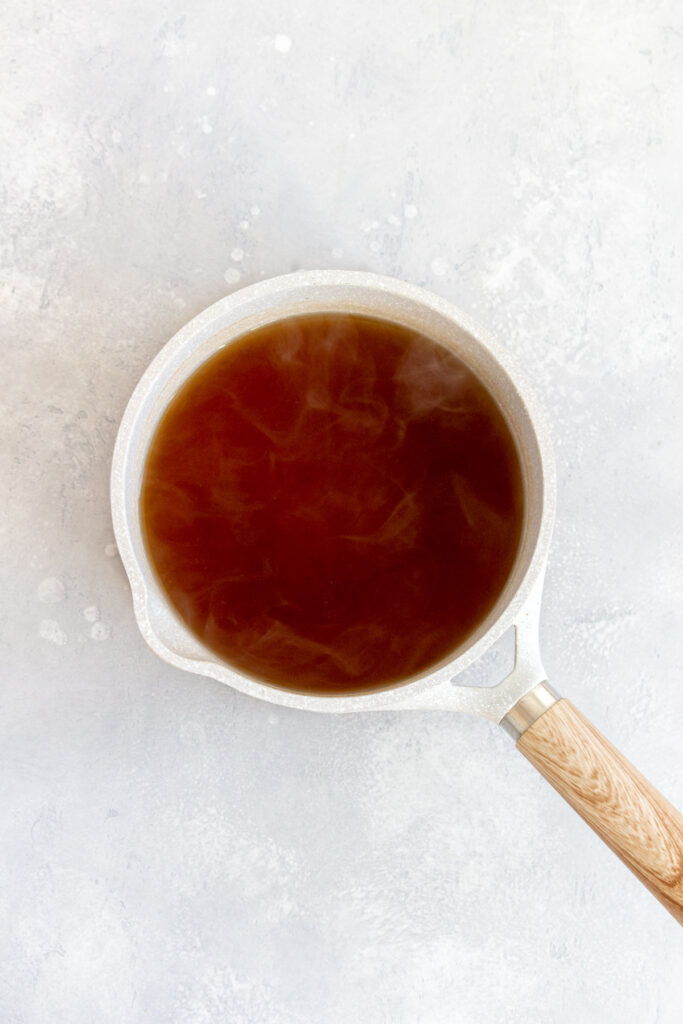
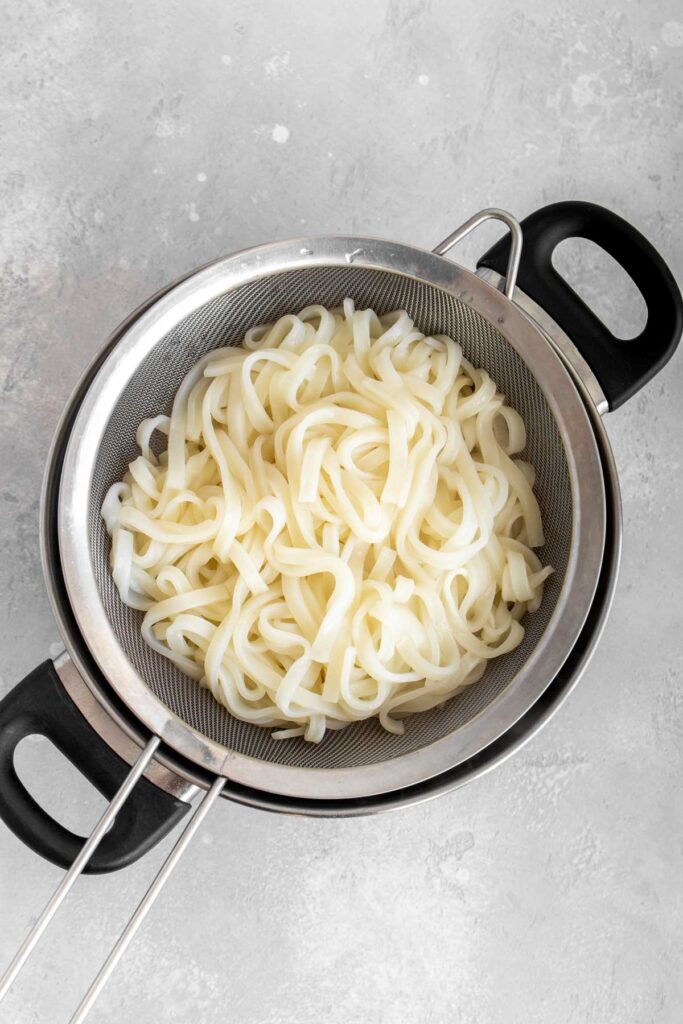
- Combine the hondashi, soy sauce, mirin, sugar, and salt with 3 cups of water. Bring it up to a boil and then turn the heat down. Simmer for 5 to 10 minutes.
- Meanwhile, cook the udon noodles according to the package before draining and setting them aside. Mine takes 1 minute to cook.
- Divide the udon, soup, inari age, and kamaboko into two bowls. Top with shichimi togarashi and green onions before enjoying if desired.
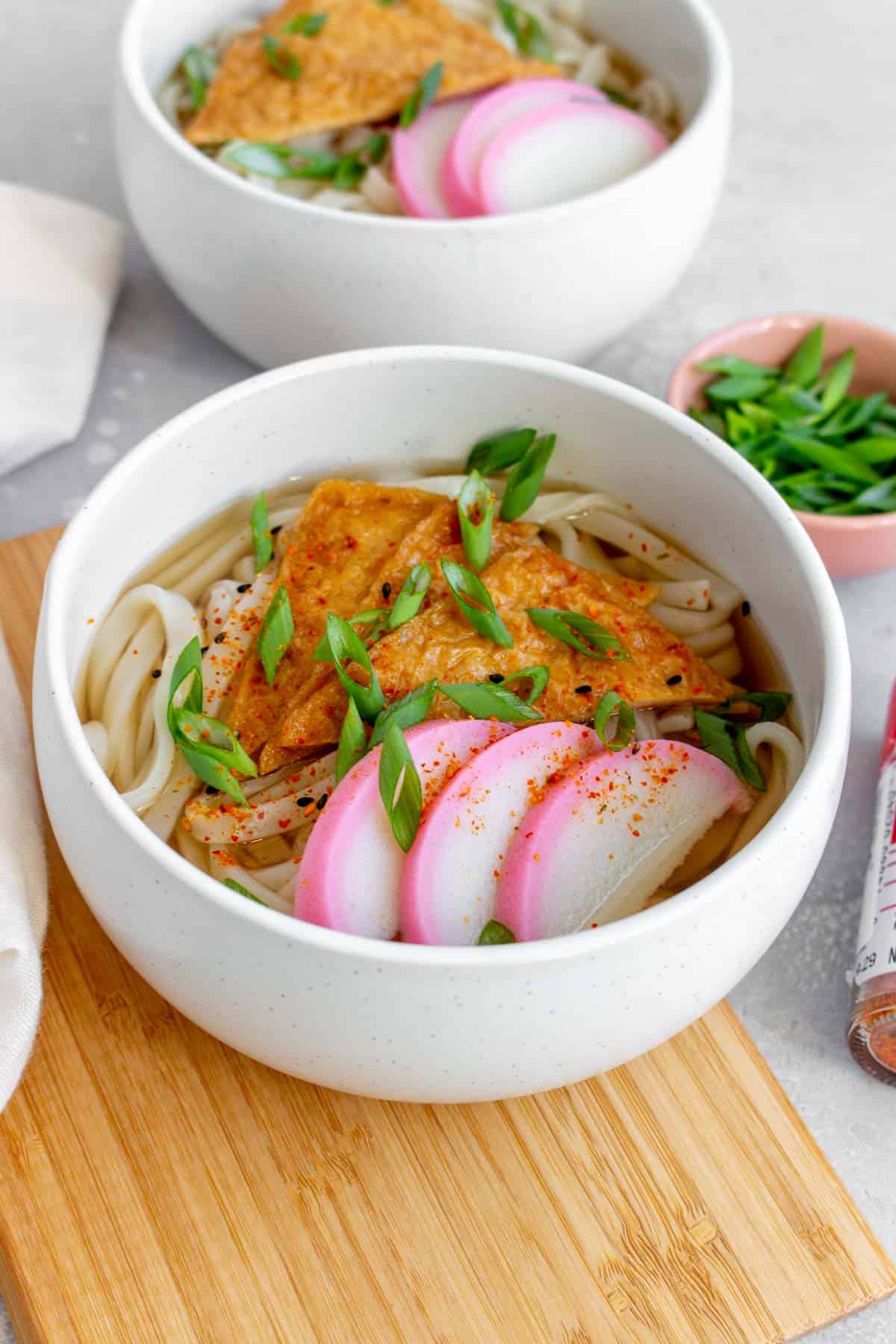
Recipe Tips and Notes
- It takes so little time to make that I do not make this dish ahead of time. It takes around the same amount of time to reheat the broth vs making it from scratch.
- I like to sprinkle some shichimi togarashi (Japanese 7 spice) on top for some extra flavor and heat. It contains dried chilies, sesame, orange peel, nori, and more.

Kitsune udon, which literally translates to fox udon, is an udon noodle soup recipe made with a dashi-based broth and is topped with seasoned deep-fried tofu pouches called inari age and fish cakes.
Some sources suggest that it is named fox udon as foxes in old Japanese folk tales enjoyed eating deep-fried aburaage. Inari age is aburaage seasoned in a sweet and savory dashi broth. Others believe the udon dish got its name as the tofu is the color of a fox.
You can make your homemade inari age by cutting in half and boiling 6 to 7 aburaage. Squeeze out the water and simmer them in a pot of around 2 cups of dashi stock with 3 tablespoons of soy sauce, mirin, and sugar. Use parchment of an otoshibuta (drop lid) to keep the liquid from evaporating.
Yes, skip the fish cake and use kombu dashi powder instead of dried bonito flakes. Also, double-check the store-bought inari age. My friend Lisa, The Viet Vegan, found some that were not vegan! So, always double-check the ingredients listed.
What udon noodles do I use?
There are a lot of options when it comes to buying udon noodles for this tofu and fish cake udon. Here are the ones that I usually see in stores.
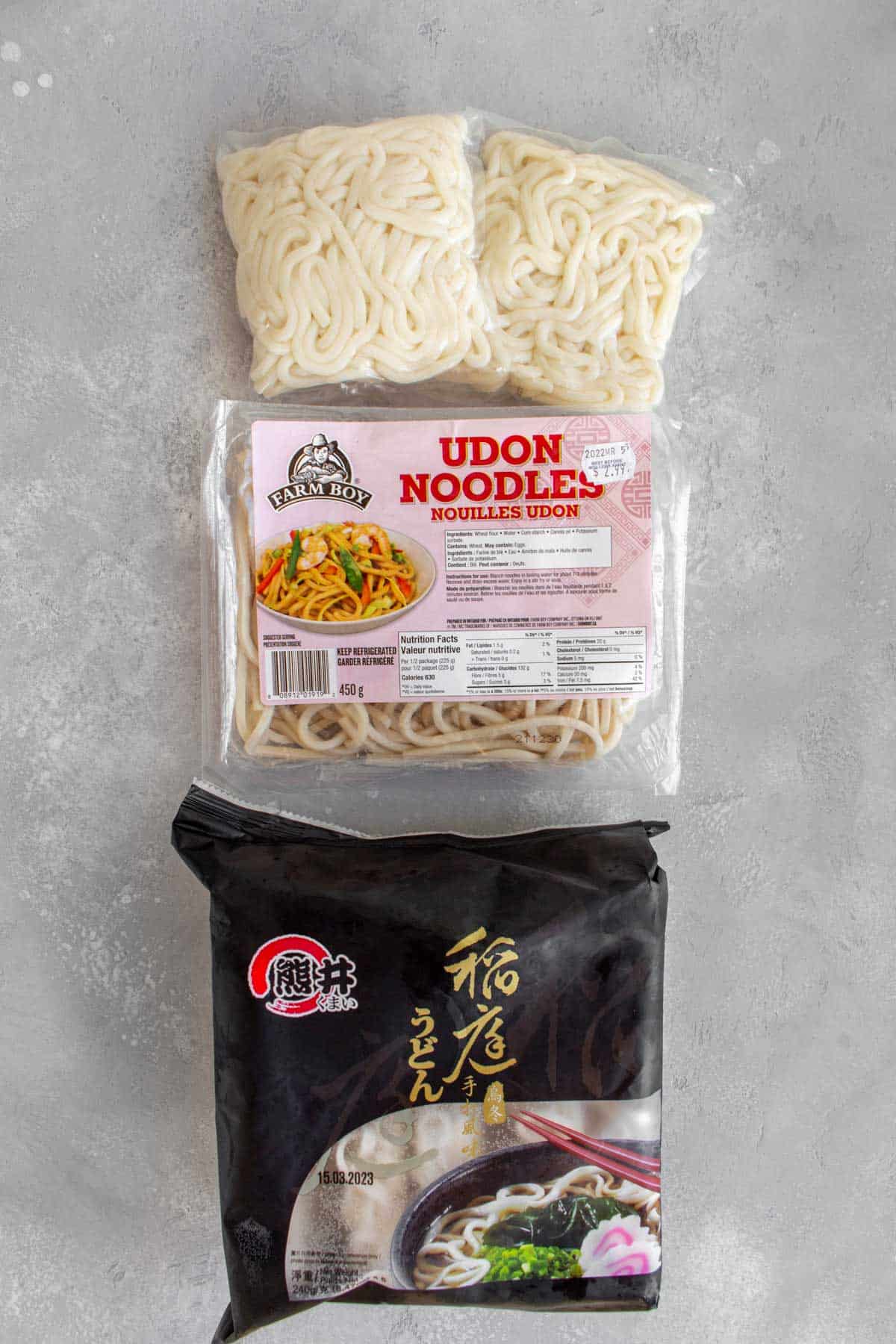
- Shelf Stable Udon Noodles: There are udon noodles that you find on the shelf at the store. It really depends on the brand when it comes to the shelf-stable ones, as I find some to have a really strong aftertaste to them. (The first one pictured)
- Fresh Udon Noodles: If you can find fresh udon noodles in the refrigerated section. I like using these noodles when possible, but they do expire relatively quickly, so I can’t stock up on them! I usually have to use them within the week of purchasing them. (The second one pictured)
- Frozen Udon Noodles: This one is one of my favorite options if you cannot find fresh udon noodles. As they’re frozen, they can essentially live forever in my freezer and satisfy my cravings whenever I get hit with them! (The third one pictured)
- Dried Udon Noodles: Not pictured above but dried udon noodles look similar to dried spaghetti noodles. These are convenient as you store them like you would pasta. However, they’re not my favorite as they’re not as plump and chewy as fresh udon noodles.

Click here to sign up to stay up to date with new recipes sent straight to your inbox PLUS a free ebook with 10 easy chicken recipes!
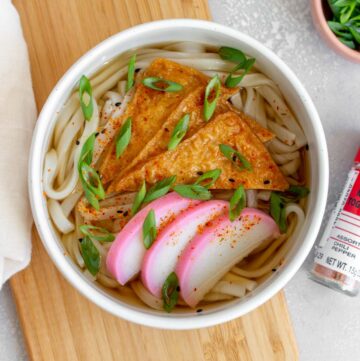
Kitsune Udon
Ingredients
Instructions
- Combine the hondashi, soy sauce, mirin, sugar, and salt with 3 cups of water. Bring it up to a boil and then turn the heat down. Simmer for 5 to 10 minutes.
- Meanwhile, cook the udon noodles according to the package before draining and setting them aside. Mine takes 1 minute to cook.
- Divide the udon, soup, inari age, and kamaboko into two bowls. Top with shichimi togarashi and green onions before enjoying if desired.
Nutrition Per Serving
More Recipes You’ll Love
- Chicken Katsu
- Soboro Don (Ground Chicken Bowl)
- Teriyaki Chicken Wings
- Teriyaki Chicken Thighs
- Yaki Udon
- Beef Udon Stir Fry
- Curry Udon
Other places to connect with me
@carmyshungry on Instagram
Facebook
Shop my Amazon faves
Email: [email protected]



Leave a Reply